Featured Resources
Getting Back to Work 3.0: Best Practices for Managing Commercial Buildings During COVID-19 Recovery
Getting Back to Work 3.0: Best Practices for Managing Commercial Buildings During COVID-19 Recovery builds upon guidance resources produced by BOMA International at varying stages of the COVID-19 pandemic. The third installment in the Getting Back to Work series includes updates and additional information relevant to today’s commercial property professionals, including guidance on vaccination policies and employee health and well-being concerns.
Simply put, the COVID-19 pandemic is changing things for the commercial office sector—and it seems to be doing so in stages. Charting a Path to the Future of the Office, the first in our series of BOMA Deep Dives, provides a comprehensive snapshot of the industry amid transformation and demystifies the road to “Workplace 2.0.” And check out the bonus video interview between the author of Deep Dive No. 1 and two BOMA members who served as experts for this first BOMA Deep Dive.
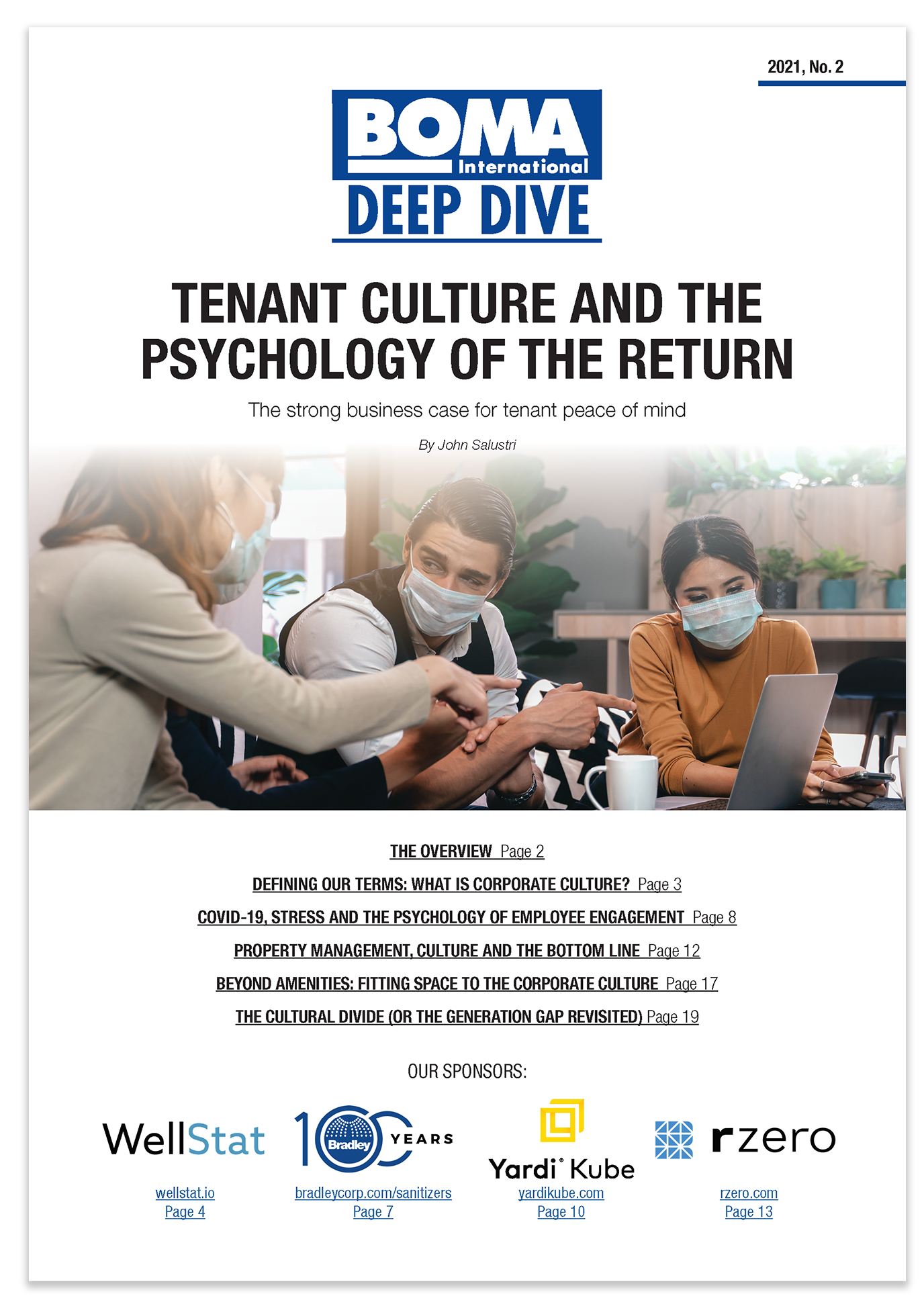
Property professionals and tenant occupiers are busy preparing for the “Great Return” of office workers. While mask-wearing requirements and social distancing measures have their place in these arrangements, there also is a critical human element that must be considered. Tenant Culture and the Psychology of the Return, the second in our series of BOMA Deep Dives, explores the role of the office in reconnecting a changed workforce. And check out the bonus video interview between the author of Deep Dive No. 2 and two industry experts who contributed to this BOMA Deep Dive.
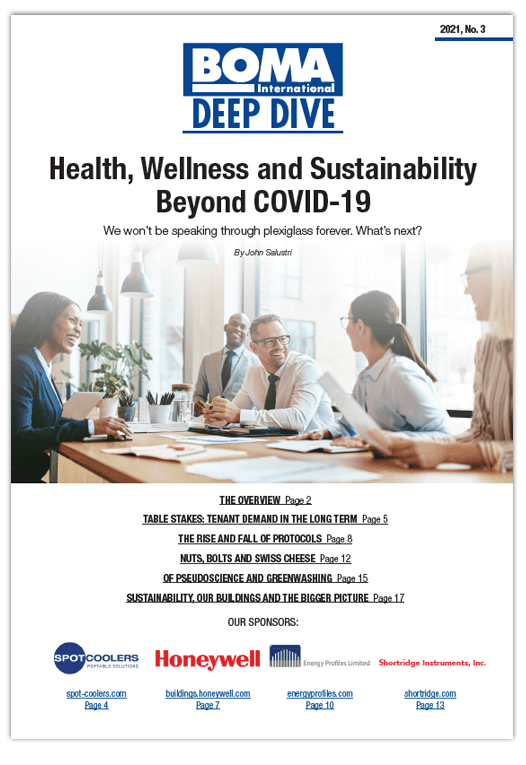
Across the U.S., workers are returning to the office, businesses are opening to full capacity and public health guidance is easing to reflect a growing population of vaccinated individuals. Behind the scenes, property professionals are working tirelessly to deliver health-centric environments that reflect the needs of tenants. Health, Wellness and Sustainability Beyond COVID-19, the third in our series of BOMA Deep Dives, explores tenant well-being and highlights commercial real estate’s role in helping building occupants thrive during the early stages of pandemic recovery and beyond. And watch this bonus video interview between the author of Health, Wellness and Sustainability Beyond COVID-19 and three industry experts who contributed to BOMA Deep Dive No. 3.
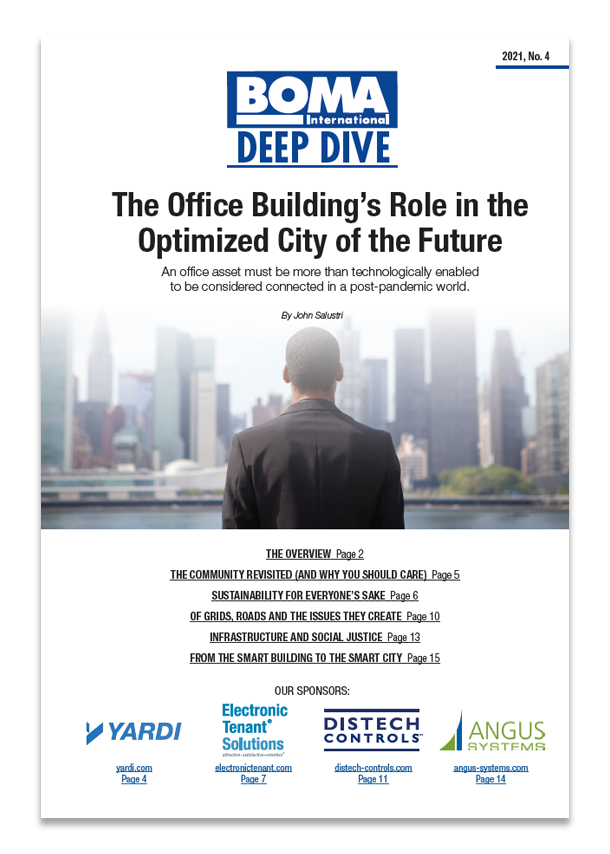
Property professionals and their tenants are emerging from the COVID-19 pandemic with a renewed appreciation for the value of connectivity in the built environment. As they have discovered, a commercial property must be more than just technologically enabled to be considered connected in a post-pandemic world. Deep Dive No. 4: The Office Building’s Role in the Optimized City of the Future explores the essential role office buildings play in fostering a renewed sense of connection in their communities. This fourth installment in our series of BOMA Deep Dives challenges conventional wisdom about “smart buildings” and “smart cities” to uncover how innovation and strategic decisions made at the property level could help power a more sustainable, resilient and equitable future for occupants of commercial buildings—and the communities in which they reside. Check out this bonus video interview between the author of The Office Building’s Role in the Optimized City of the Future and two industry experts who contributed to BOMA Deep Dive No. 4.
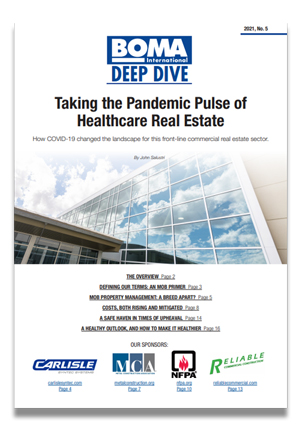
Despite the challenges of the past year and a half, the healthcare real estate sector has proven itself as a resilient asset class. Looking ahead, medical office buildings will be expected to reflect a new era in health care delivery, informed by the trends accelerated throughout the COVID-19 pandemic. Taking the Pandemic Pulse of Healthcare Real Estate, the fifth installment in our series of BOMA Deep Dives, offers an overview of this sector’s performance amid disruption and identifies key considerations for both property professionals and tenants as they prepare for a future defined by factors like ease of access, flexibility and technology integration. After you read BOMA Deep Dive No. 5, be sure to watch this bonus video interview between the author of Taking the Pandemic Pulse of Healthcare Real Estate and two industry experts who contributed to this installment.
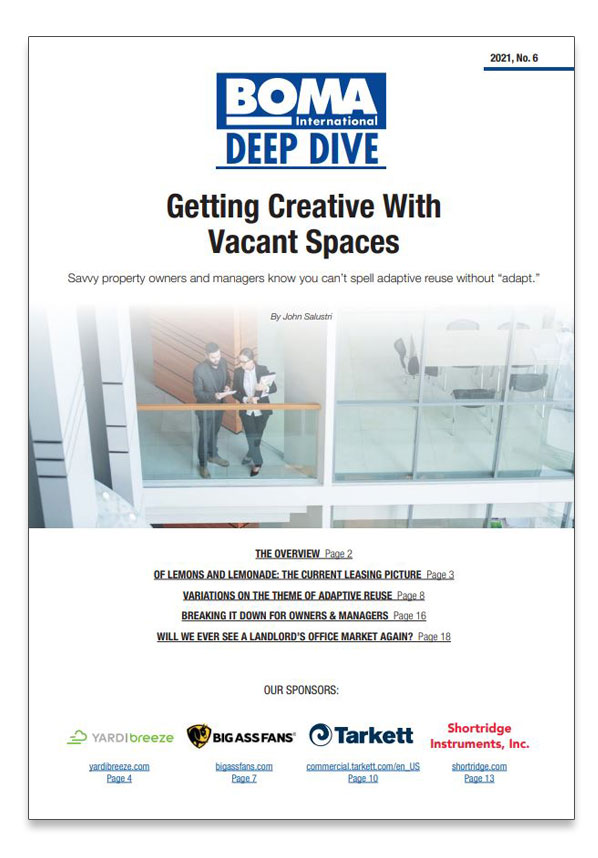
While it didn’t take long for much of the commercial real estate industry to experience the negative impacts of the pandemic, experts anticipate the journey back to normal will take some time. Until then, savvy property professionals with net operating income on their minds are finding new purposes for space left vacant over the past 18-plus months. Some are searching for temporary solutions, while others are looking to play the long game via adaptive reuse projects. Getting Creative With Vacant Spaces, the sixth installment in our series of BOMA Deep Dives, explores some of the conversions experts are seeing out in the field today, as well as the variety of factors driving this trend. And check out the bonus video interview between the author of Deep Dive No. 6 and two industry experts who contributed to this BOMA Deep Dive.
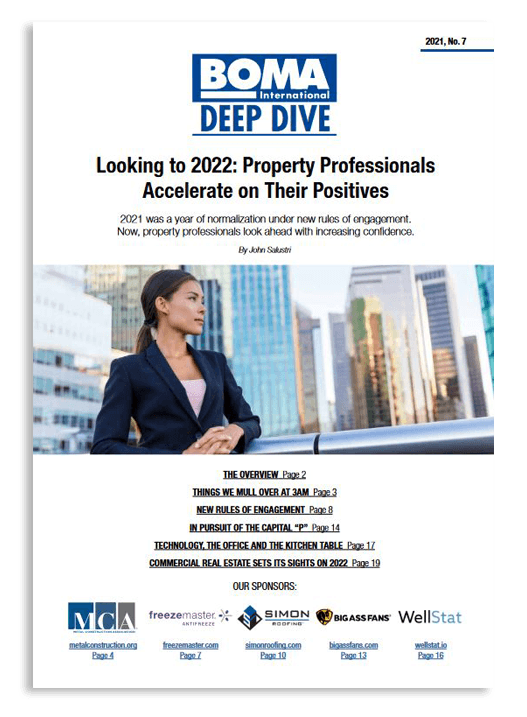
As we open the door to 2022, we seem fairly well armed against most surprises. For the past 18-plus months, we have navigated through a global pandemic and a variety of economic downturns of various depths and durations. With extreme caution we ask, what is there left to throw us off our game? To answer this question, we spoke to senior executives from some of the top commercial real estate companies. Looking to 2022: Property Professionals Accelerate on Their Positives, the seventh installment in our series of BOMA Deep Dives, explores what’s in store for the year ahead according to the C-suite. And check out the bonus video interview between the author of Deep Dive No. 7 and two of the industry experts who contributed to BOMA Deep Dive No. 7: Piedmont Office Realty Trust’s Kevin Fossum and Zeller’s Steve Herron.
Improving Occupant Safety Inside Buildings
Drawing from guidance issued by health agencies and industry organizations, BOMA International and Jacobs have partnered to share Improving Occupant Safety Inside Buildings, a resource designed to provide property professionals with timely operational recommendations to consider for their building systems.